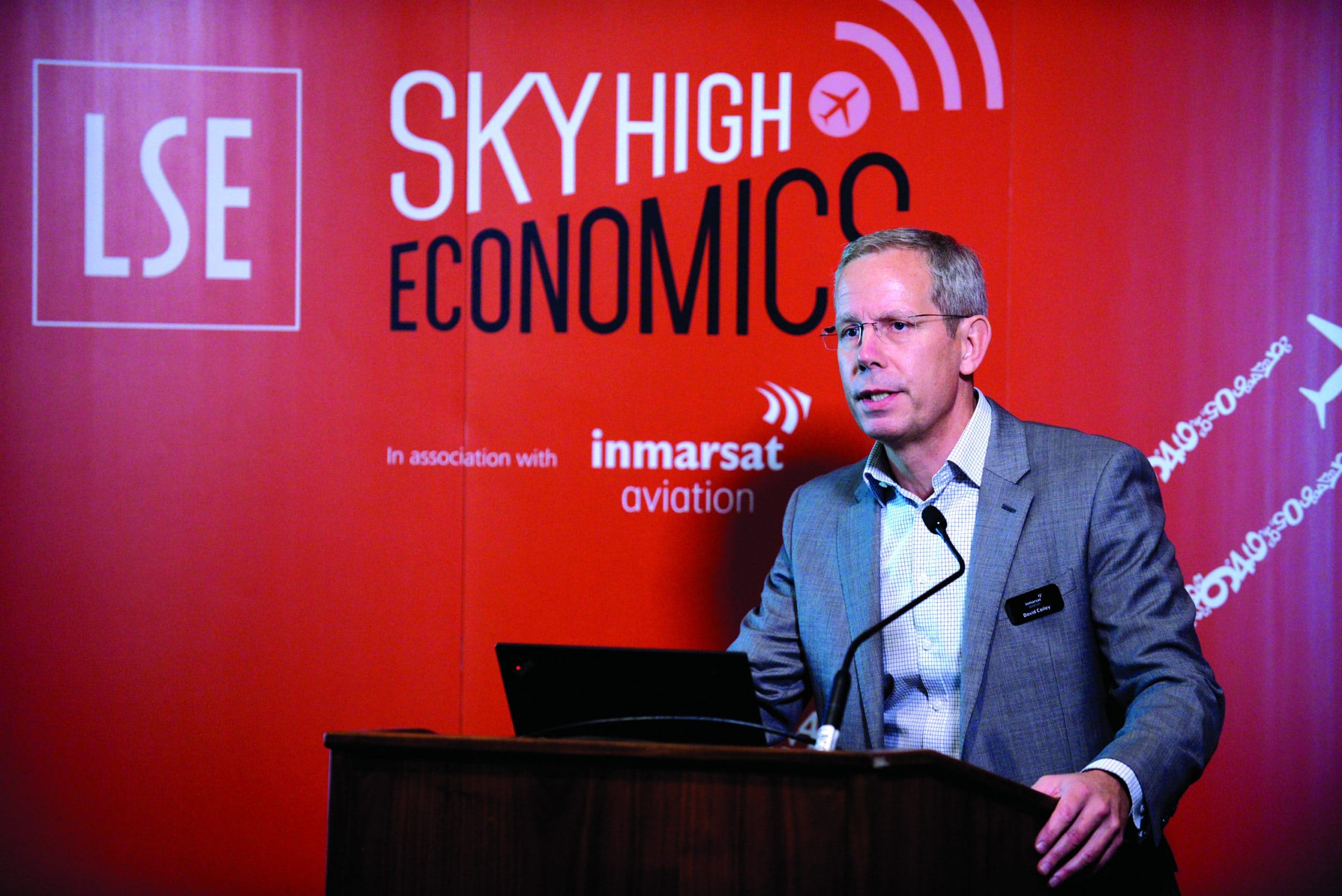Sky High Economics: In-Flight Broadband, a $130B Market by 2035
Share

“The airlines are the gatekeepers to a $130-billion opportunity,” said Dominic Walters, vice-president, Market Communications and Strategy, Inmarsat, speaking of its global market projection for in-flight broadband in the next 20 years.
At APEX EXPO this week, Inmarsat and the London School of Economics and Political Science (LSE) released a first-of-its-kind research study, predicting significant growth in broadband-enabled e-commerce, advertising and premium content revenue in the sky.
Sky High Economics: Quantifying the Commercial Opportunities of Passenger Connectivity for the Global Airline Industry is the first part of a 12-month project quantifying the economic impact of connectivity on the global airline industry.
APEX EXPO video sponsored by West Entertainment
The report “allows airlines to look at their business modeling and inform their decision-making using hard data that simply does not exist in an independent, cohesive, global scale,” said David Coiley, vice-president, Aviation, Inmarsat.
By 2035, the study concludes that airlines’ share of ancillary revenue will be $30 billion, growing from $1 billion in 2018. Broadband access charges that currently make up more than 80 percent of that revenue are expected to drop to just over 50 percent by 2035. The report suggests a $15-billion annual revenue opportunity for full-service and low-cost airlines from e-commerce, advertising and premium content.
Reflecting on the confluence of elements needed to create the report, LSE’s Dr. Alexander Grous said, “We’ve looked at this for years now, but the most important question is ‘why now?'”
He explained that by bringing together passenger demand, the step change driven by a new generation of satellites and the digitization of content, the industry is now able to monetize connected ancillary revenue opportunities in an unprecedented way.


